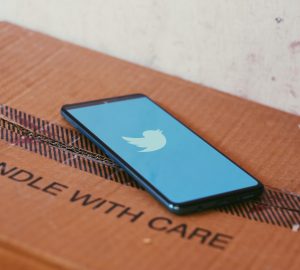By Luciana Gurgel | MediaTalks, London
An article published by Journalism.co.uk last a year ago asked a question: can TikTok save journalism? The author, Daniel Green, highlighted the successful experience of The Washington Post in the platform known by its short lip-sync, comedy videos.

What a difference a year makes.
According to Sense Towers Mobile Insights Strategist Craig Chapple, it has generated more than 2,4 billion downloads globally from the App Store and Google Play, including downloads for the Chinese version of the app, Douyin.
And The Washington Post TikTok guy, performed by video producer Dave Jorgenson, has now 713 followers and 27 million likes. He shared his views in an interview given to CNN’s podcast Reliable Source.
A Mediakik report gathered impressive facts and statistics, described as promising signs of TikTok’s continued growth for 2020.
- TikTok has been downloaded over 2 billion times
- TikTok users spend 45 minutes on the app on average
- TikTok users open the app 8 times everyday on average
- TikTok gained more users in one month than Instagram gained in any 2019 quarter
- TikTok’s monthly engagement rate is over 70%
- Over 63% of TikTok users are between the ages of 10 and 29
- TikTok is available in 155 countries and 75 languages
- Over 30% of all U.S. TikTok users are adolescents
It was almost banned from the US, saved by a last-minute deal with Oracle and Walmart.
After The Washington Post TikTok guy became a sensation, many other news media organisations has been experimenting different formats to engage new audiences and deliver content via TikTok.
In an interview to MediaTalks, British journalist Chris Stokel-Walker, who is currently writing a book on the platform, said:
“The Washington Post and NPR’s Planet Money are making amazing use of TikTok on an organisational level, while independent journalists working within big organisations like the BBC’s Sophia Smith-Galer and CNN’s Max Fisher are also big on the platform. But we haven’t yet seen any real news generated on the platform as yet. Whoever can make that work has an opportunity to unlock the next generation of journalism consumers.”
Generation is a key factor for the future of news. Columnist Zoe Williams shared her own experience in an article published by The Guardian .
“I suppose, though I couldn’t swear to it, families used to sit round the TV together and watch the same news. Now we all get our news separately, me from Twitter, the kids from TikTok, my Mr from reputable radio and newspaper sources.”
“My family gets its news from different sources. I was amazed how quickly the children learned all about George Floyd’s death – and its searing injustice.”
Love or Hate?
In the articleLove or Hate? Publishers on TikTok, YouTube, and Instagram , Twipe , a Belgian technology company that specialises in digital edition based publishing, checked in on the questions publishers have about TikTok, YouTube and Instagram.
When it comes to legacy print news brands on TikTok, The Washington Post is the gold standard. However there are more and more publishers experimenting with TikTok every month. In France, Le Monde has grown to 62k followers while Italy’s Corriere dello Sport has nearly 60k followers.
Twipe projects that the number of publishers experimenting with TikTok will likely grow in the US as well, as TikTok announced this summer a $1 billion creator fund to encourage posting on the platform.
“While it’s still unclear how many publishers will be part of this program, or how much they will receive, it is clear the program is meant for publishers who have already started their TikTok presence. To be eligible, they’ll need to have at least 10,000 followers on TikTok and have received 10,000 views over the last 30 days. Through their previous Creative Learning Fund, TikTok paid publishers including UpWorthy and the magazine Self, to post educational content. Over a 7-week period, participating publishers published 35 posts for $50,000.
The article reminds that as TikTok stands as the 2nd most downloaded app globally publishers would be foolish to overlook this platform.
Indeed, many have decided to follow The Washington Post’s steps
Buzzfeed’s TikTok ambassadors
Neiman Lab, an US-based journalism think tank, highlighted in February that BuzzFeed News was recruiting a brand new type of employee — dubbed “Teen Ambassadors” — who will create original TikTok and Instagram videos, bringing Gen Z voices into 2020’s US election coverage. Here they are.
How can you become an expert TikTok journalist?
For those who are interested, it’s not easy as it looks like. According to an expert, there are some basic rules to follow:
- You have to strike a balance between gaining inspiration from others and creating something unique.
- Watch a lot of TikTok content before you make your own. As you watch videos, decide how the thing you want to say could fit in with the existing content. Maybe there’s a viral song you could change the words to.
- Maybe – following in the footsteps of Max Foster of CNN – you could act out song lyrics to funny captions, explaining aspects of a story or your job.
- The best journalistic content teaches viewers something without them even realising it. Talk to TikTok users to find out what news they want, and how they want to get it. When creating your content, use simple language and a friendly tone – you don’t want to come across as condescending.
- Don’t rely only on the sound of your own voice. On-screen graphics and text, as well as music, can help you explain concepts quickly and clearly.
Master all of the above, and you’ll find the art of TikTok journalism increases your knowledge of the topics you’re talking about and refines your practice. That’s because you have to get to the core of a story – and its relevance to the public – quickly.
The recommendations weren’t made by a veteran journalist, but by a young journalist, Jane Corscadden, in an article published by the British Council, under the Future News Worldwide program, a partnership programme between the institution and media organisations. The aim is to support young people to develop journalism skills and to establish the UK as a global leader in the nurturing of young journalists and media figures.
It’s a sign of the TikTok times.
Luciana Gurgel, is a Brazilian journalist based in London. She begun her editorial career at O Globo, one of the leading Brazilian media organisations. Later she founded (along with Aldo de Luca) Publicom, a successful corporate communications agency, acquired in 2016 by Weber Shandwick (IPG Group). In London, she has been working as news correspondent for Brazilian media – MyNews Channel, J&Cia – to which she writes a weekly column on trends and issue related to the news industry. The column originated a separate platform, MediaTalks, headed by Luciana from London as Editor-in-Chief, in association with Jornalistas Editora.













